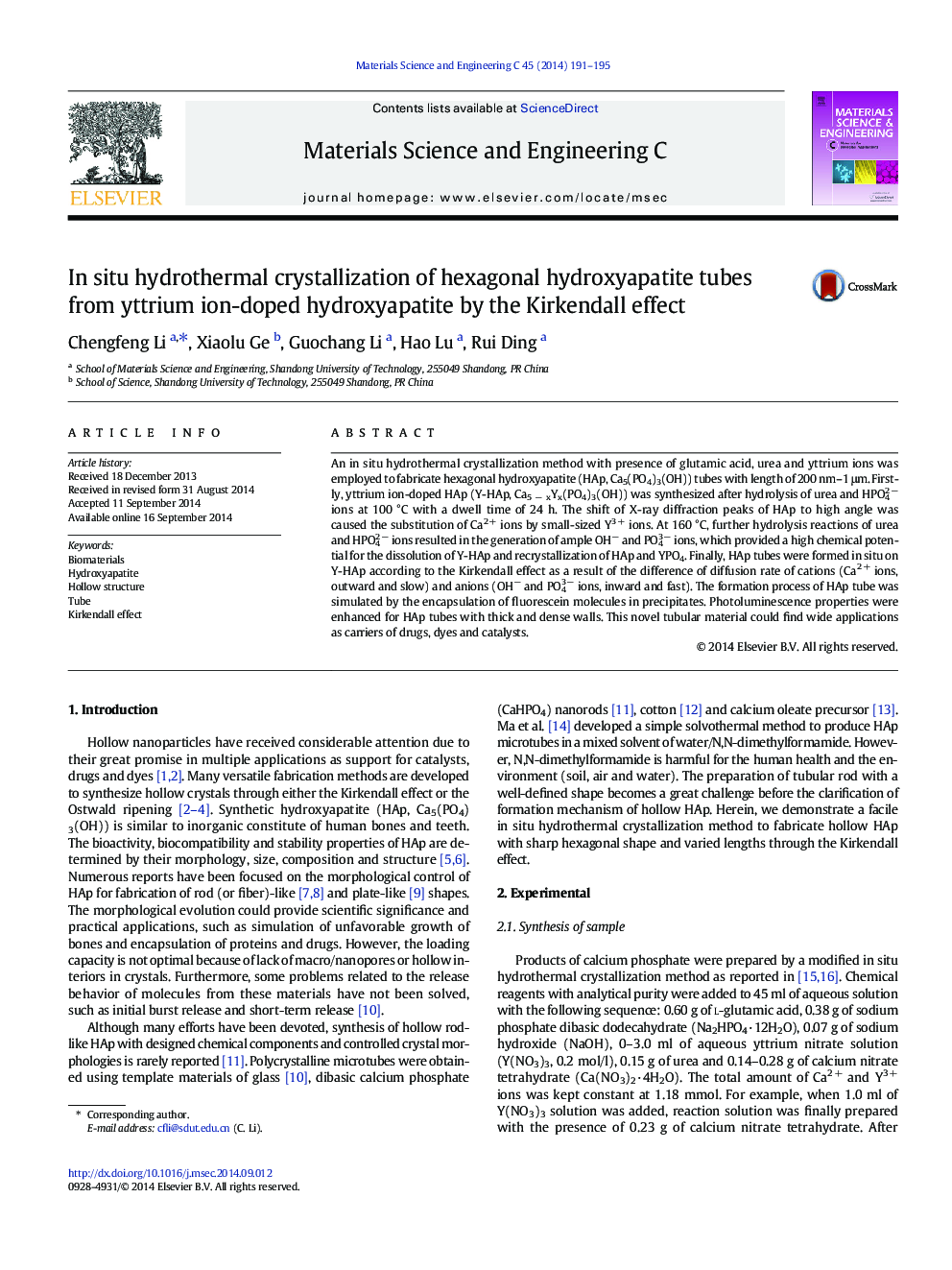| Article ID | Journal | Published Year | Pages | File Type |
|---|---|---|---|---|
| 1428548 | Materials Science and Engineering: C | 2014 | 5 Pages |
•Hexagonal HAp tubes with adjustable sizes are prepared by a hydrothermal method.•A dissolution-recrystallization process occurs during hydrothermal treatment.•The formation mechanism is explained by the Kirkendall effect.•The crystallization is simulated by the encapsulation and release of fluorescein.
An in situ hydrothermal crystallization method with presence of glutamic acid, urea and yttrium ions was employed to fabricate hexagonal hydroxyapatite (HAp, Ca5(PO4)3(OH)) tubes with length of 200 nm–1 μm. Firstly, yttrium ion-doped HAp (Y-HAp, Ca5 − xYx(PO4)3(OH)) was synthesized after hydrolysis of urea and HPO42 − ions at 100 °C with a dwell time of 24 h. The shift of X-ray diffraction peaks of HAp to high angle was caused the substitution of Ca2 + ions by small-sized Y3 + ions. At 160 °C, further hydrolysis reactions of urea and HPO42 − ions resulted in the generation of ample OH− and PO43 − ions, which provided a high chemical potential for the dissolution of Y-HAp and recrystallization of HAp and YPO4. Finally, HAp tubes were formed in situ on Y-HAp according to the Kirkendall effect as a result of the difference of diffusion rate of cations (Ca2 + ions, outward and slow) and anions (OH− and PO43 − ions, inward and fast). The formation process of HAp tube was simulated by the encapsulation of fluorescein molecules in precipitates. Photoluminescence properties were enhanced for HAp tubes with thick and dense walls. This novel tubular material could find wide applications as carriers of drugs, dyes and catalysts.
Graphical abstractFigure optionsDownload full-size imageDownload as PowerPoint slide
